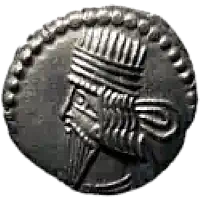
Medieval Coins
Introduction to Coinage in the Middle Ages
Medieval coins represent a fascinating period in numismatic history. These metal tokens—often small, yet rich in detail—were more than just currency. They reflected the complex social, political, and religious life of the Middle Ages. From kings and emperors to feudal lords, many used coins to project their power and influence.
Coins as a Reflection of Society
Unlike modern coins, medieval issues were deeply symbolic. Designs often included religious motifs, heraldic symbols, and Latin inscriptions. As a result, each coin served not only as money but also as a message. The imagery helped reinforce authority and legitimacy in a fragmented world.
Timeframe and Historical Context
The medieval period spanned roughly from the 6th to the 15th century. During this time, Europe experienced significant shifts in power, belief systems, and economic structures. Therefore, the coins of the era evolved to match these changes. For instance, early medieval coins were crude and thin. By contrast, later examples became more sophisticated in both design and composition.
Coin Minting Across Regions
Medieval coins varied greatly by region. In Western Europe, kingdoms like France and England issued coins under royal control. Meanwhile, in the Byzantine Empire, coinage remained centralized and highly detailed. In Islamic territories, coins featured Arabic script and avoided human images in favor of calligraphy and geometric patterns.
Functions Beyond Trade
Coinage during the Middle Ages served more than just economic functions. It also had strong political and religious meaning. For example, many coins featured Christian crosses or Islamic phrases to align rulers with divine support. Additionally, coins helped unify regions under a shared system of value, which was essential for growing markets and empires.
The Role of Authority in Minting
Minting rights were typically held by kings, bishops, or powerful nobles. This control allowed them to influence currency, determine design, and regulate circulation. As a result, coins became tools of power and propaganda. In some cases, unauthorized or counterfeit coins circulated during times of unrest or economic instability.
Collecting and Studying Medieval Coins Today
Today, medieval coins are highly valued by collectors and historians alike. Their uniqueness and variety offer insights into forgotten histories. In fact, even worn or clipped examples can reveal trade routes, alliances, or cultural transitions. For collectors, rarity, condition, and historical significance all affect value.
Tips for Beginners
If you’re starting a medieval coin collection, begin with affordable pieces from well-documented periods. Look for coins with visible inscriptions and clear images. Moreover, consult numismatic catalogs and join collector forums to learn more. Third-party grading and authentication services can also help verify authenticity.
Conclusion: A Timeless Legacy in Metal
In conclusion, medieval coins are more than ancient currency. They are miniature records of human history, art, and power. Because of their beauty, symbolism, and significance, they continue to captivate collectors and researchers around the world. Whether you’re studying medieval culture or building a coin collection, these historical artifacts offer endless discovery.
Initially, medieval coins drew inspiration from their Roman predecessors. These early medieval coins featured images of emperors and influential figures, echoing the numismatic tradition of the Roman Empire. This was a pragmatic approach as it facilitated the recognition and acceptance of these coins in regions that had been part of the Roman Empire or were influenced by its culture. However, as the medieval period progressed, coins began to depart from the Roman model and embrace a more distinct identity.
One of the most intriguing aspects of medieval coinage is the manner in which it became a canvas for the expression of regional culture, religion, and political authority. Different issuing authorities used coins as a medium to assert their legitimacy and consolidate their rule. For instance, Christian kings frequently adorned their coins with images of saints, angels, or religious symbols, thereby aligning their reign with divine approval and garnering the support of the Church. This merging of religious and political iconography on coins is a testament to the interwoven nature of church and state during the medieval period.
The materials used for minting medieval coins also underwent a transformative journey. In the earlier medieval period, gold and silver were the primary metals of choice. These precious metals not only conferred intrinsic value to the coins but also reflected the economic realities of the time. However, as the availability of gold and silver became increasingly scarce, copper and bronze coins gained traction. The transition to base metals was necessitated by the need for more practical and accessible forms of currency.





 '
'